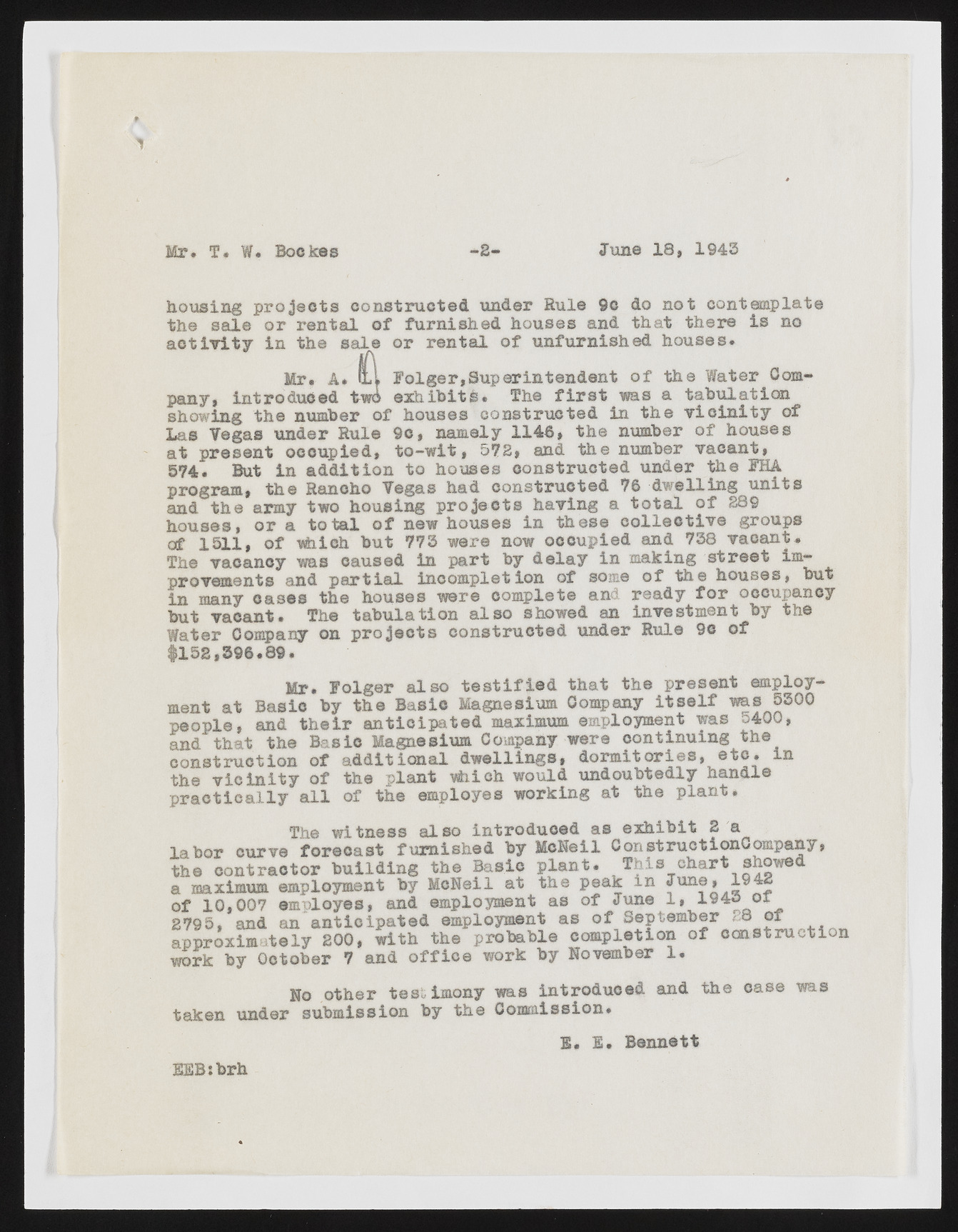Copyright & Fair-use Agreement
UNLV Special Collections provides copies of materials to facilitate private study, scholarship, or research. Material not in the public domain may be used according to fair use of copyrighted materials as defined by copyright law. Please cite us.
Please note that UNLV may not own the copyright to these materials and cannot provide permission to publish or distribute materials when UNLV is not the copyright holder. The user is solely responsible for determining the copyright status of materials and obtaining permission to use material from the copyright holder and for determining whether any permissions relating to any other rights are necessary for the intended use, and for obtaining all required permissions beyond that allowed by fair use.
Read more about our reproduction and use policy.
I agree.Information
Digital ID
Permalink
Details
More Info
Rights
Digital Provenance
Publisher
Transcription
Mr* T« W. Bockes - 2- June 18, 1943 housing projects constructed under Rule 9c do not cant snip late the sale or rental of furnished houses and that there is no activity in the sale or rental of unfurnished houses* Mr. A. ftl Folger, Superintendent of the Water Company, introduced two exhibits. The first was a tabulation showing the number of houses constructed in the vicinity of Las Yegas under Rule 9o, namely 1148, the number of houses at present occupied, to-wit, 572, and the number vacant, §74. But in addition to houses constructed under the FHA program, the Rancho Yegas had constructed 76 dwelling units and the army two housing projects having a total of 889 houses, or a total of new houses in these collective groups cf 1511, of which but 773 were now occupied and 738 vacant. The vacancy was caused in part by delay in making street improvements and partial incompletion of some of the houses, but in many cases the houses were complete and ready for occupancy but vacant. The tabulation also showed an investment by the Water Company on projects constructed under Rule 9c of $152,396.89.M r. Folger also testified that the present employment at Basic by the Basic Magnesium Company itself was 5300 people, and their anticipated maximum employment was 5400, and that the Basic Magnesium Company were continuing the construction of additional dwellings, dormitories, etc# in the vicinity of the plant which would undoubtedly handle practically all of the employes working at the plant. The witness also introduced as exhibit 2 a labor curve forecast furnished by McNeil GonstructionGompany, the contractor building the Basic plant* This chart showed a maximum employment by McNeil at the peak m June, 1942 of 10,007 employes, and employment as of June 1, 1940 or 2795, and an anticipated employment as of September approximately 200, with the probable completion of construction work by October 7 and office work by November 1. No other testimony was introduced and the case was taken under submission by the Commission* S. 1. Bennett BEB:brh

